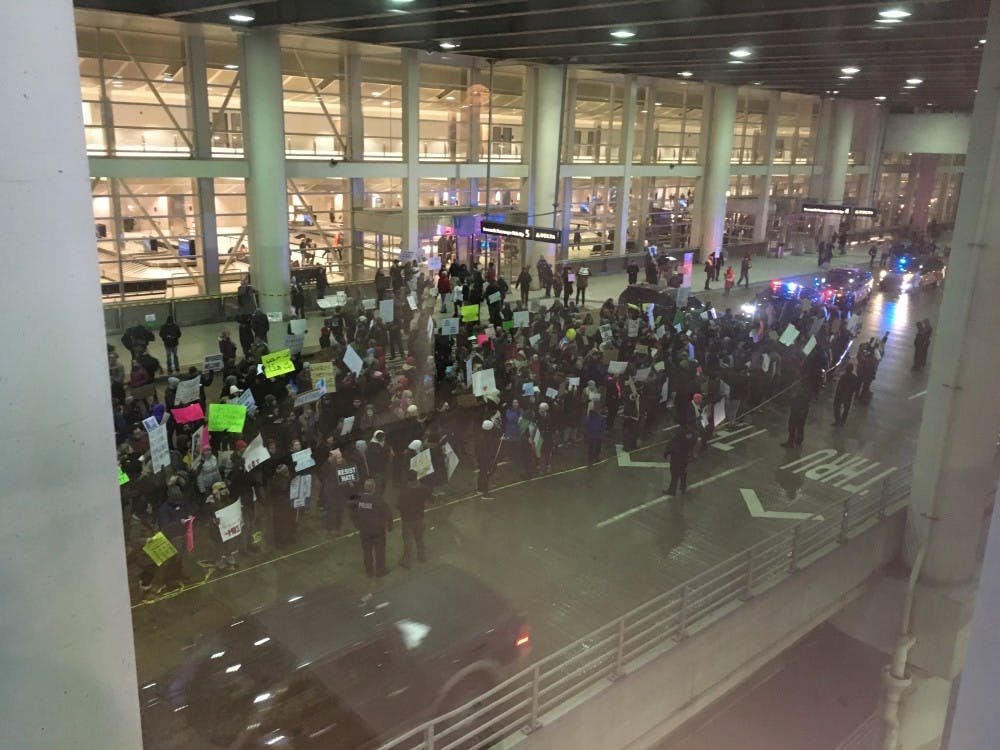Last year, Detroit Public School District saw students, teachers, and parents protest school conditions, perceived mistreatment of teachers, and other issues. Protests ranged from disagreement with Governor Snyder’s new plan to alleviate the debt, to parents wanting their students to go to mold-free schools.
Protesting was happening across the city, from teacher sick-outs to student walk-outs.
These sick-outs closed 18 schools around the city, others could barely stay open.
After two days of protests, emergency manager Darnell Earley attempted to intervene, urging teachers to return to classrooms and students to go back to school. Earley and the Michigan Senate chastised teacher for “putting politics before students.”
“It is truly unfortunate that so many of those who profess to be dedicated educators have decided to participate in this action given its unjustifiable and conscionable consequence,” said Earley, a former emergency manager of the City of Flint.
The schools opened after two days, and Michigan’s governor promised to improve conditions in DPS (now DPSCD) schools.
A year later, Detroit families are still fighting and organizing protests to oppose school closure and for better schooling conditions; students still don’t have books, adequate space, or resources to learn in a “quality” school.
In the beginning of the year, the School Reform Office released a list of 38 schools in Michigan to be closed by the end of this school year, 25 of which were in the City of Detroit.
The DPSCD school board signed a “partnership agreement” with the state on May 1, ensuring that schools in the district will not close, as long as they develop a collective plan for school improvement.
This partnership agreement resulted from protests on the local level.
During a nationwide renaissance of massive scale political protests, the success of local Detroit school closing protests begs the question: Is there something fundamentally different that activists must do in larger scale protests to force sustainable change?
In a 2013 Atlantic article, Moisés Naím wrote: “most massive rallies fail to create significant changes in politics or public policies,” positing that “fervent political energy on the ground is hugely disproportionate to the practical results of these demonstrations.”
Naím’s feature suggests “street protests” don’t work due to the lack of connection between organizations, social media diluting the message, and government showing little or no response.
Detroit has proven that protests are only successful when all the above are achieved. But, there are also examples of this on the national level.
The day after Donald Trump’s inauguration saw one of the nation’s largest demonstrations. Over 5 million women and pro-feminist men protested worldwide against the election of the Donald Trump. Organizers led trainings for the protestors, from Planned Parenthood talks, to workshops showing women how to run for office, and even lawyers working on a lawsuit against President Trump. After one week of debate about the attendance at the March for Women compared to the inauguration attendance of Donald Trump, the mass movement devolved.
Another example of mass protest failing at the national level, in fact, had global reach.
Micah White, one of Occupy Wall Street's co-creators, said in an NPR interview, “Occupy Wall Street tested out a grand theory of social change…‘If you can get millions of people into the streets, largely non-violent, and unified behind a central message, then change will have to happen.’”
#Occupy spread to 82 countries, but it did not achieve its intended goals.
Historically, mass protests have contributed directly to human rights gains. From the Civil Rights Movement, to the Stonewall Riots, protests have led to massive social change in this country.
With such massive mobilization and worldwide reach as #Occupy and the March for Women, what reasons are there for protest to fail?
Naím said, behind the scenes is “rarely a well-oiled and more-permanent organization capable of following up on protestors’ demands and undertaking…political work that produces real change in the government.”
According to Naím, to protest effectively, that is, organizations must have realistic goals, realistic demands, and realistic timing. Perhaps the Women’s March on Washington and #OccupyWallStreet were ahead of their time or asked for too much at once.
Other modern protests have demonstrated that protests can be a successful way to achieve political goals. Nationwide protests against the Muslim Ban at airports interrupted flights and travel for fliers around the country. It was a multileveled protest, from pro-bono lawyers on the scenes giving legal counsel to civil disruption that received national headlines and eventual recognition in the courts. This protest was a well-oiled machine that worked on every level.
What is the recipe for success?
Protests seem to work, when there is a plan for afterward.



